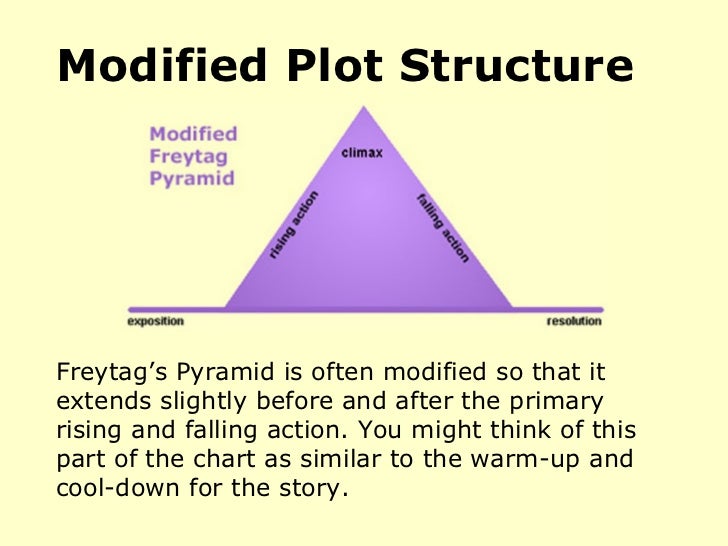Structure is one of the most discussed and important words in fiction writing. There are many theories of what exactly structure is. Screenwriting texts and experts, for example, often declare that structure is the proper placement of plot points or the use of sequences and acts. These organizing principles are essential to a script, but they relate, I believe, not to structure but to form. Form is the external shape of a script, of how its content– its events and scenes–are molded. Form is not the content of a story. Actual structure, I believe, is the content. And content is always king.
To create a story, a writer must first construct its central conflict, that is, its basic character goals and conflicts and the key problem of the story. Then the writer develops this central conflict into a long series of logically connected events with a beginning, middle and end; that is, with a set-up, the conflict development, and a climax. The storyline grown from a central conflict is the structure. As a simple example, consider the original Die Hard film. Its premise or central conflict is this: A tough and resourceful New York City policeman flies to Los Angeles for Christmas to win back his estranged wife, but just as he meets her, she and her co-workers are kidnapped by terrorists and held hostage in their locked down skyscraper. The policeman must evade the terrorists hunting him to rescue his wife and the other hostages, alone. The plot of Die Hard is the events that are developed from this central conflict. That is, all the murders, fights, escapes, counterattacks and relationships in the film, all the escalating complications, are applications or expansions of this central conflict. A central conflict is the plot seed that logically determines the nature of the plot tree.* The plot itself, this series of logically connected complications, is the structure. Where you place an inciting incident, plot points, act breaks and how you use sequences, the external frame or shape of a story, is only the form of your script. To emphasize the point: the structure is your series of connected events logically grown from and determined by a central conflict. Think: form is the exterior shape of your story, structure is its interior content/events. (This analysis leaves out how a writer can (and should) also organize his plot using important dramatic techniques such as mystery and suspense lines, dramatic irony, surprise and deception.)
The plot structure of a mystery can often be described using Freytag's pyramid (i.e., it has exposition, rising action, climax, falling action, and denouement), but the plots of mysteries also tend to follow other, more genre-specific conventions, such as the gradual discovery of clues culminating in the revelation of the culprit's identity as well as their motive. Plot is the literary element that describes the structure of a story. It shows the a causal arrangement of events and actions within a story. Types of Linear Plots Plots can be told in Pyramid Plot Structure The most basic and traditional form of plot is pyramid-shaped. Plot refers to the series of events that occur in a story and the order in which they take place, and structure refers to the way these events are organized as well as their relationship to one.



Elements Of A Plot Structure
When creating a story, content must be king: plot structure comes before form. That is, a writer (generally) creates the main character conflicts and the logically developed and connected plot events before he solidifies these into sequences and acts. Consider the issue this way: What is more important to a good story: intriguing characters and exciting conflicts organized in a dramatic, logical series of events? Or ordinary characters and clichéd events perfectly organized into sequences and acts? Also ask yourself: do you want your draft to be perfectly shaped gold or mud? I firmly believe that it is best to create the major content/events first, and then worry about how to best shape these. (That is not to say that a writer can't go back and forth between content and form but content must come first creatively.)
Examples Of A Plot Structure Diagram
And please note that I am not saying that form is not important. It is. But today there is way too much discussion of how to properly shape a story (plot points, blah blah) and not enough on how to create original characters and dramatic plots. Nj vip lottery club. Slot size stripers pictures. There are many current movies that are well 'structured' (plot points in the perfect places!) but the content of these films is awful.
The two hardest parts of writing a good story are creating an original, layered and integrated central conflict and then developing this into an exciting series of escalating, logically connected and climaxed events. I believe that a writer should at first focus on these two very difficult fundamentals. Let me help you construct a central conflict so that it is a rich seed that you can develop into a great plot structure.
The Plot Structure Of Animal Farm
Article originally posted here: https://www.linkedin.com/pulse/write-great-script-focus-plot-structure-form-scott?trk=portfolio_article-card_title

